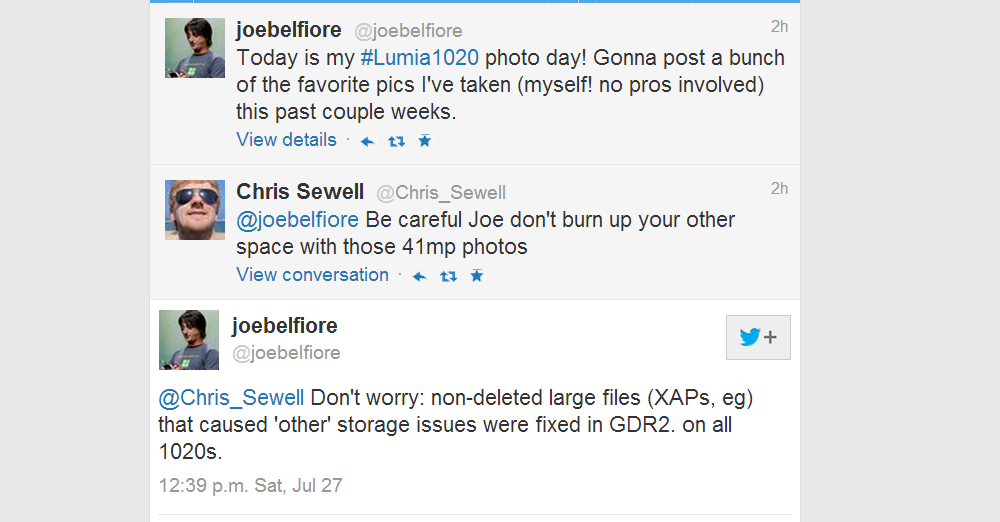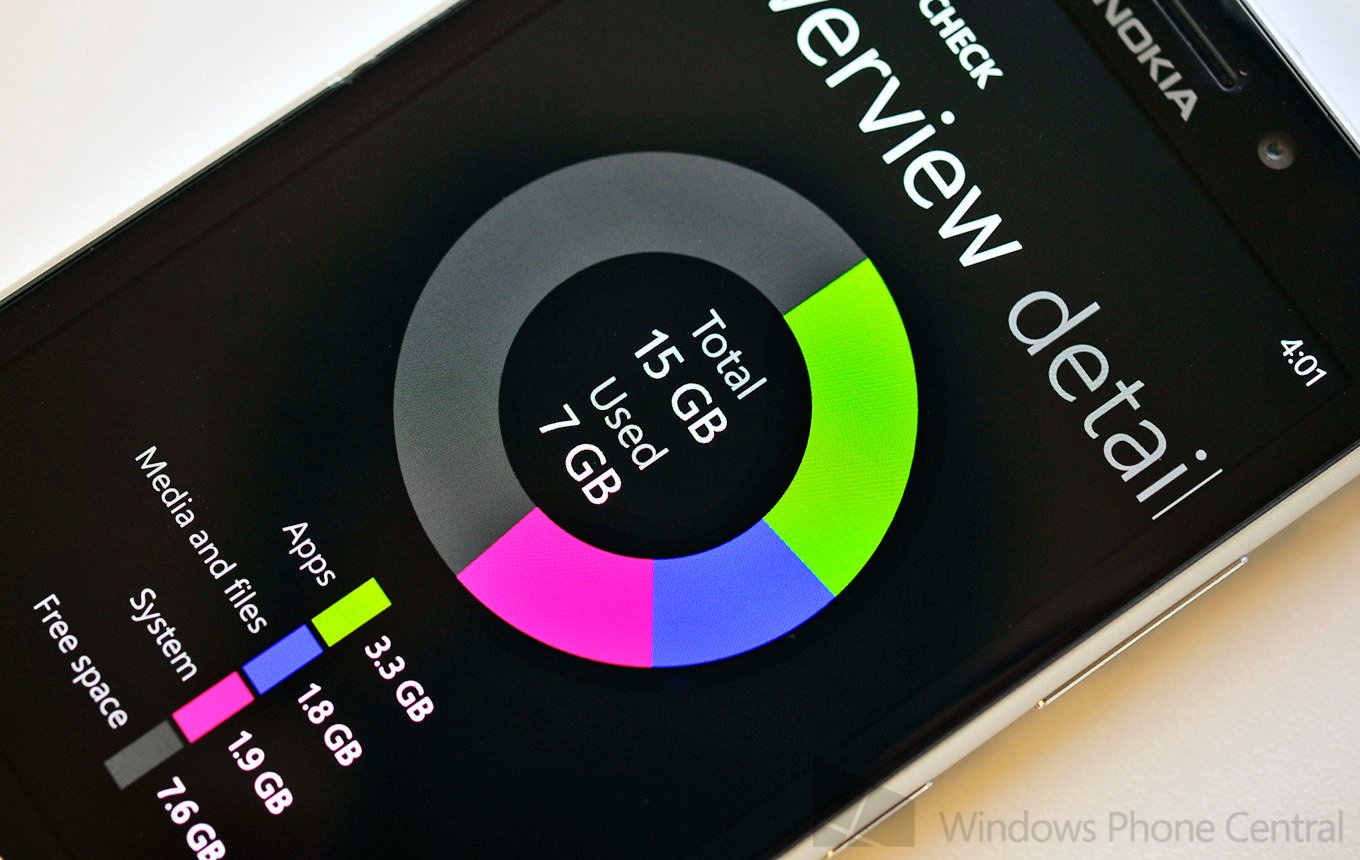Does Windows Phone 8 GDR2 fix the ‘Other Storage’ issue? Microsoft says yes, but we’re not too sure

A vexing problem for those on Windows Phone 8 is that of space-filling ‘Other Storage’ found under Settings > Phone Storage. The problem is after a few days, weeks or months of usage, that mysterious area begins to fill up with “stuff” and users really have no recourse to getting it back.
While Nokia and other OEMs have introduced apps to delete Temporary Files, which for some does gain back significant space, it does not touch the other Other Storage problem for many.
Now, Microsoft’s Joe Belfiore stated in a Tweet today that at least in GDR2 (OS build 10327), the problem has been addressed. But from our usage of the Lumia 1020, we’re not too sure users will still be satisfied.

Belfiore responds in a Tweet that:
“Don't worry: non-deleted large files (XAPs, eg) that caused 'other' storage issues were fixed in GDR2. on all 1020s.”
That may be true and we’re not going to disagree with the man who “runs the team doing Windows Phone product definition & design” but the changes do not completely get rid of the ‘other storage’ problem either.
Case in point, our Nokia Lumia 1020, which we’ve been using only since Tuesday already has 2.6GB of ‘other storage’ (according to Nokia’s app; if we use the system reading, it’s 3.65GB). That’s about 1GB more than our previous daily driver, the Lumia 920, which we used for months. We should also note we still have 22GB of free space on the 1020, so it’s not because we’re filling it up with a lot of media or apps.
On our Lumia 925, the story is a little better with only 696 MB allocated to ‘other’, which is good since the Lumia 925 has half the storage of the Lumia 1020 at 16GB.
All the latest news, reviews, and guides for Windows and Xbox diehards.
Regardless, we can’t quite say to people that the GDR2 update will magically fix the ‘other’ storage observation. Sure, Microsoft may have improved upon it with the update, but it’s still there.
What is the Other Storage issue?

‘Other Storage’ on Windows Phone 8 includes cached data this stored on your device. Everything from email, games, videos, game info, app info, documents, images synced to SkyDrive, etc. are all items that can fill it up.
It’s been observed by many users that having auto-upload to SkyDrive is one culprit that can quickly fill the mysterious area up. Heck, even just manually uploading files can contribute to it. Over at WPXbox, they give some tips for trying to regain space back including limited syncing of email accounts, not opening SkyDrive folders with loads of images (thumbnails) and other “tricks” that have mixed results.
Another method is to try and use the app ‘Shrink Storage’, which once again, has varied results (we’ve never gained anything back from using it).
We should note that believe it or not, this is really not a bug but rather seemingly a side-effect of how the OS operates. That’s why it can’t just be patched. It appears to be a low-level OS feature that allows app, game and service data to be stored locally on the device for fast-retrieval (and reduce OTA data consumption). It's more akin to having to re-do your plumbing than fixing a leaky faucet.
The problem of course is there appears to be no way to reset it, besides wiping the device, nor a way to help gain space back or know what is causing it. While we still have 22GB of storage left on our Lumia 1020, ergo we don’t mind the lost-space now, others have lost 5, 10, 14GB and more on their devices.
So in conclusion, while GDR2 may have made it better, make no mistake that your ‘other storage’ can still fill up with seemingly little usage. How high will ours go? What exactly caused it? We have no idea but we’ll tinker around to try and find out.

Daniel Rubino is the Editor-in-chief of Windows Central. He is also the head reviewer, podcast co-host, and analyst. He has been covering Microsoft since 2007 when this site was called WMExperts (and later Windows Phone Central). His interests include Windows, laptops, next-gen computing, and wearable tech. He has reviewed laptops for over 10 years and is particularly fond of 2-in-1 convertibles, Arm64 processors, new form factors, and thin-and-light PCs. Before all this tech stuff, he worked on a Ph.D. in linguistics, performed polysomnographs in NYC, and was a motion-picture operator for 17 years.
